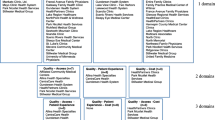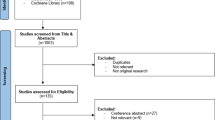Abstract
Background
Assessing physicians’ clinical performance using statistically sound, evidence-based measures is challenging. Little research has focused on methodological approaches to setting performance standards to which physicians are being held accountable.
Objective
Determine if a rigorous approach for setting an objective, credible standard of minimally-acceptable performance could be used for practicing physicians caring for diabetic patients.
Design
Retrospective cohort study.
Participants
Nine hundred and fifty-seven physicians from the United States with time-limited certification in internal medicine or a subspecialty.
Main Measures
The ABIM Diabetes Practice Improvement Module was used to collect data on ten clinical and two patient experience measures. A panel of eight internists/subspecialists representing essential perspectives of clinical practice applied an adaptation of the Angoff method to judge how physicians who provide minimally-acceptable care would perform on individual measures to establish performance thresholds. Panelists then rated each measure’s relative importance and the Dunn–Rankin method was applied to establish scoring weights for the composite measure. Physician characteristics were used to support the standard-setting outcome.
Key Results
Physicians abstracted 20,131 patient charts and 18,974 patient surveys were completed. The panel established reasonable performance thresholds and importance weights, yielding a standard of 48.51 (out of 100 possible points) on the composite measure with high classification accuracy (0.98). The 38 (4%) outlier physicians who did not meet the standard had lower ratings of overall clinical competence and professional behavior/attitude from former residency program directors (p = 0.01 and p = 0.006, respectively), lower Internal Medicine certification and maintenance of certification examination scores (p = 0.005 and p < 0.001, respectively), and primarily worked as solo practitioners (p = 0.02).
Conclusions
The standard-setting method yielded a credible, defensible performance standard for diabetes care based on informed judgment that resulted in a reasonable, reproducible outcome. Our method represents one approach to identifying outlier physicians for intervention to protect patients.
Similar content being viewed by others
References
Miller TP, Brennan TA, Milstein A. How can we make more progress in measuring physicians' performance to improve the value of care? Health Aff. 2009;28:1429–1437.
Holmboe ES. Assessment of the practicing physician: Challenges and opportunities. J Contin Educ Health Prof. 2008;28(Suppl 1):4–10.
Landon BE, Normand S-LT. Performance measurement in the small office practice: Challenges and potential solutions. Ann Intern Med. 2008;148:353–357.
Landon BE, Normand S-LT, Blumenthal D, Daley J. Physician clinical performance assessment: Prospects and barriers. JAMA. 2003;290:1183–1189.
Scholle SH, Pawlson LG, Solberg LI, et al. Measuring practice systems for chronic illness care: Accuracy of self-reports from clinical personnel. Jt Comm J Qual Patient Saf. 2008;34:407–416.
Kaplan SH, Griffith JL, Price LL, Pawlson LG, Greenfield S. Improving the reliability of physician performance assessment: Identifying the "physician effect" on quality and creating composite measures. Med Care. 2009;47:378–387.
Lipner RS, Weng W, Arnold GK, Duffy FD, Lynn LA, Holmboe ES. A three-part model for measuring diabetes care in physician practice. Acad Med. 2007;82(Suppl 10):S48–S52.
Weng W, Hess BJ, Lynn LA, Holmboe ES, Lipner RS. Measuring physicians’ performance in clinical practice: Reliability, classification accuracy, and validity. Eval Health Prof. 2010;33:302–320.
Cizek GJ. Setting Performance Standards: Concepts, Methods, and Perspectives. Mahwah, NJ: Lawrence Erlbaum; 2001.
Angoff WH. Scales, norms, and equivalent scores. In: Thorndike RL, ed. Educational Measurement. American Council on Education: Washington, DC; 1971:514–515.
Downing SA, Tekian A, Yudkowsky R. Procedures for establishing defensible absolute passing scores on performance examinations in health professions education. Teach Learn Med. 2006;18:50–57.
Boulet JR, De Champlain AF, McKinley DW. Setting defensible performance standards on OSCEs and standardized patient examinations. Med Teach. 2003;25:245–249.
McKinley DW, Boulet JR, Hambleton RK. A work-centered approach for setting passing scores on performance-based assessments. Eval Health Prof. 2005;28:349–369.
Duffy FD, Lynn LA, Didura H, et al. Self-assessment of practice performance: Development of the ABIM Practice Improvement Module (PIMSM). J Contin Educ Health Prof. 2008;28:38–46.
American Diabetes Association. Standards of medical care in diabetes-2009. Diab Care. 2009;32(Suppl 1):S13–S61.
Rittenhouse DR, Shortell SM. The patient-centered medical home. JAMA. 2009;301:2038–2040.
Dunn–Rankin P. Scaling Methods. Hillsdale, NY: Erlbaum; 1983.
Reeves D, Campbell SM, Adams J, Shekelle PG, Kontopantelis E, Roland MO. Combining multiple indicators of clinical quality: An evaluation of different analytic approaches. Med Care. 2007;45:489–496.
Mosier C. On the reliability of a weighted composite. Psychometrika. 1943;8:161–168.
Clauser BE, Margolis MJ, Case SM. Testing for licensure and certification in the professions. In: Brennan RL, ed. Educational Measurement. 4th ed. Westport, CT: Praeger Publishers; 2006:701–731.
SAS Institute. Statistical Analysis System. Version 9.1. Cary, NC: SAS Institute; 2002.
American Board of Internal Medicine. ABIM HIPAA Business Associate Agreement. Available at: http://www.abim.org/pdf/hipaa/hipaa_compliance.pdf. Accessed October 19, 2010.
Norcini JJ, Shea JA. The credibility and comparability of standards. Appl Meas Ed. 1997;10:39–59.
Holmboe ES, Wang Y, Meehan TP, et al. Association between maintenance of certification examination scores and quality of care for Medicare beneficiaries. Arch Intern Med. 2008;168:1396–1403.
Norcini JJ, Lipner RS, Kimball HR. Certifying examination performance and patient outcomes following acute myocardial infarction. Med Educ. 2002;36:853–859.
Tamblyn R, Abrahamowicz M, Dauphinee WD, et al. Association between licensure examination scores and practice in primary care. JAMA. 2002;288:3019–3026.
Eddy DM, Schlessinger L. Validation of the Archimedes diabetes model. Diab Care. 2003;26:3102–3110.
Greenfield S, Kaplan SH, Kahn R, Nimomiya J, Griffith JL. Profiling care provided by different groups of physicians: Effects of patient case-mix (bias) and physician-level clustering on quality assessment results. Ann Intern Med. 2002;136:111–121.
Holmboe ES, Meehan TP, Lynn L, Doyle P, Sherwin T, Duffy FD. Promoting physicians’ self-assessment and quality improvement: The ABIM Diabetes Practice Improvement Module. J Contin Ed Health Prof. 2006;26:109–119.
Holmboe ES, Weng W, Arnold GF, et al. The comprehensive care project: Measuring physician performance in ambulatory practice. Health Serv Res. 2010;45:1912–1933.
Contributors
We thank the standard-setting panel, and Dr. Gerald Arnold and Leslie Tucker for their help with the scoring strategy and manuscript preparation, respectively.
Funders
The ABIM Foundation funded this study.
Prior Presentations
An abstract of this study was presented at the annual AcademyHealth meeting on 28 June 2009.
Conflict of Interest
All authors are employed by the ABIM. Drs. Hess, Weng, and Lipner are co-inventors of a business method invention describing the application of the standard-setting method to practicing physicians. The invention is patent pending. Dr. Holmboe received honoraria for teaching about clinical assessment from the Uniformed Services University of the Health Sciences, the University of Kansas, and the Harvard-Macy Systems Assessment Course. Dr. Holmboe receives royalties for a textbook on assessment published by Mosby-Elsevier.
Author information
Authors and Affiliations
Corresponding author
Electronic supplementary material
Below is the link to the electronic supplementary material.
Appendix A
Process for Determining Minimum Performance Thresholds and Point Values (Scoring Weights) for Each Measure. (DOC 41 kb)
Appendix B
The Distribution of Composite Measure Scores and the Standard Representing Minimally-Acceptable Diabetes Care (N = 957 Physicians). (DOC 46 kb)
Rights and permissions
About this article
Cite this article
Hess, B.J., Weng, W., Lynn, L.A. et al. Setting a Fair Performance Standard for Physicians’ Quality of Patient Care. J GEN INTERN MED 26, 467–473 (2011). https://doi.org/10.1007/s11606-010-1572-x
Received:
Revised:
Accepted:
Published:
Issue Date:
DOI: https://doi.org/10.1007/s11606-010-1572-x




